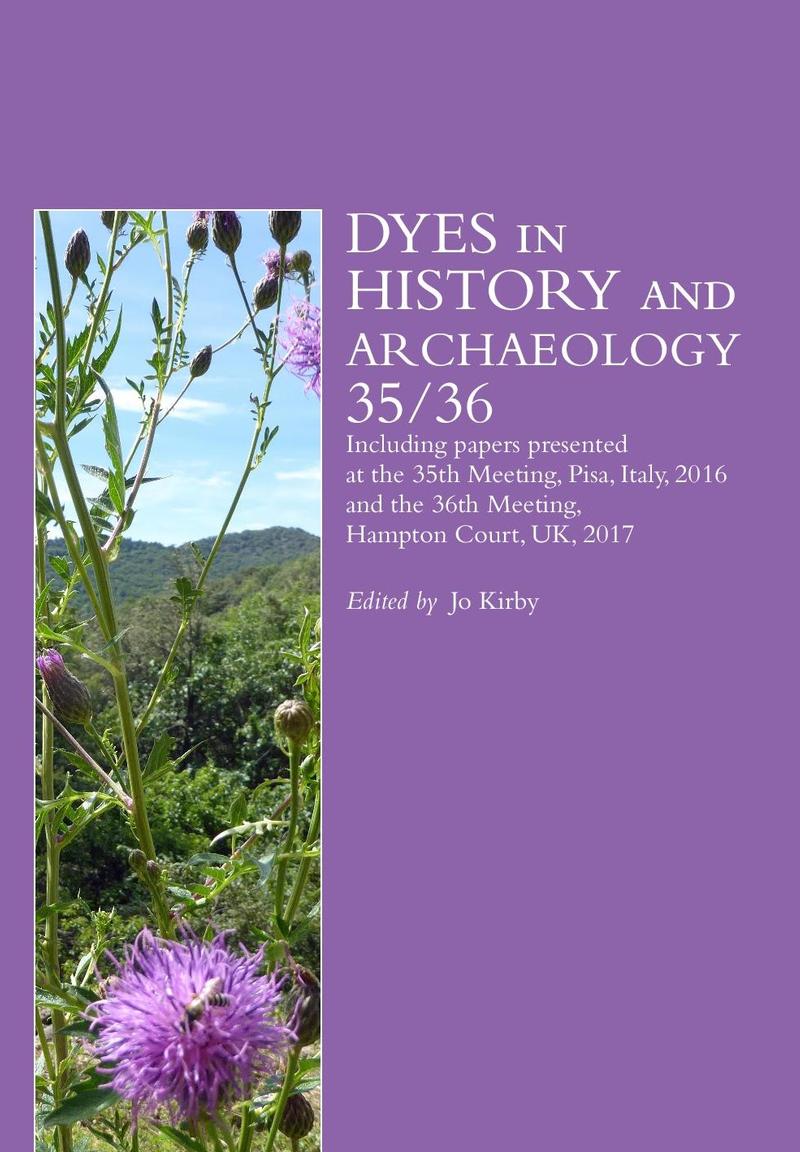Dyes in History and Archaeology 35/36
Editor Jo Kirby
Sources of yellow natural dyes provide a leitmotif running through the papers contained inthis volume. Sawwort is the source of a yellow dye that played an important part in textiledyeing in 15th-century Europe and was traded by the Florentine dye company of Francescodi Giuliano Salviati. It is less well known than weld, also traded by the Salviati company andused all over Europe as well as in Iran for dyeing Persian carpets. Some sources of yellow dyealso have a pharmaceutical role: chamomile is one such, present among the named boxesof ‘simples’ housed at the Spezieria di Santa Maria della Scala, Rome.
Not every paper presented at the 35th and 36th meetings of Dyes in History and Archaeologyheld in Pisa (2016) and Hampton Court (2017) focused on yellow dyes, however. Othertopics discussed and presented in this book include the fascinating story of Cornelis Drebbel,the scarlet cochineal dye he discovered and its subsequent history; a Victorian carpetmanufacturer who used the lichen dye cudbear; and non-destructive methods of examinationof Japanese textiles.
The front cover shows sawwort (Serratula tinctoria L.) growing in the photographer’s garden in theCévennes, southern France. Photo © Dominique Cardon.
You can have a look inside the book here.

ISBN 9781909492813
Binding Paperback
Dimensions 140 x 270mm
Pages 138
Published July 2021
Price £45.00